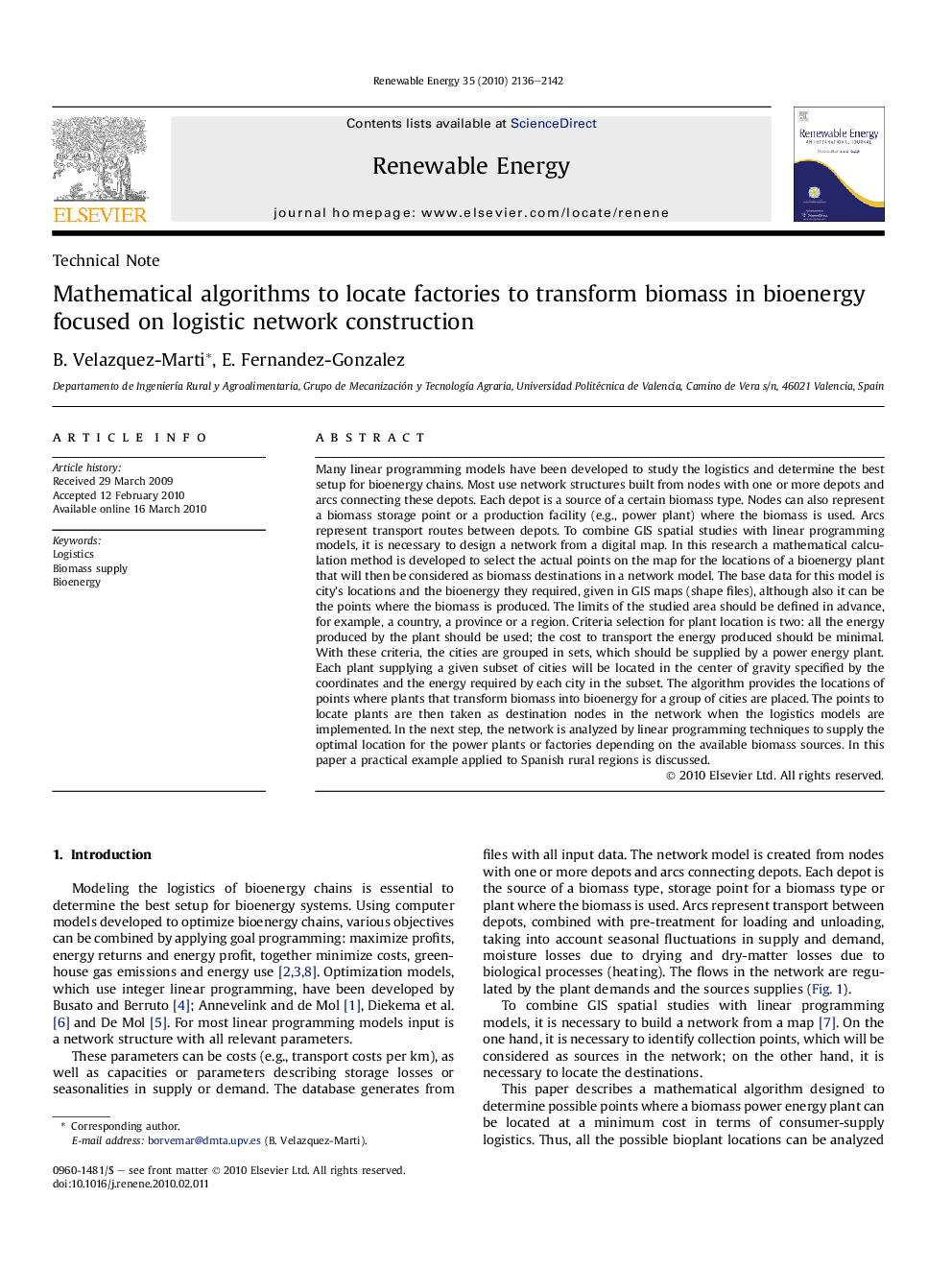| کد مقاله | کد نشریه | سال انتشار | مقاله انگلیسی | نسخه تمام متن |
|---|---|---|---|---|
| 301812 | 512516 | 2010 | 7 صفحه PDF | دانلود رایگان |

Many linear programming models have been developed to study the logistics and determine the best setup for bioenergy chains. Most use network structures built from nodes with one or more depots and arcs connecting these depots. Each depot is a source of a certain biomass type. Nodes can also represent a biomass storage point or a production facility (e.g., power plant) where the biomass is used. Arcs represent transport routes between depots. To combine GIS spatial studies with linear programming models, it is necessary to design a network from a digital map. In this research a mathematical calculation method is developed to select the actual points on the map for the locations of a bioenergy plant that will then be considered as biomass destinations in a network model. The base data for this model is city's locations and the bioenergy they required, given in GIS maps (shape files), although also it can be the points where the biomass is produced. The limits of the studied area should be defined in advance, for example, a country, a province or a region. Criteria selection for plant location is two: all the energy produced by the plant should be used; the cost to transport the energy produced should be minimal. With these criteria, the cities are grouped in sets, which should be supplied by a power energy plant. Each plant supplying a given subset of cities will be located in the center of gravity specified by the coordinates and the energy required by each city in the subset. The algorithm provides the locations of points where plants that transform biomass into bioenergy for a group of cities are placed. The points to locate plants are then taken as destination nodes in the network when the logistics models are implemented. In the next step, the network is analyzed by linear programming techniques to supply the optimal location for the power plants or factories depending on the available biomass sources. In this paper a practical example applied to Spanish rural regions is discussed.
Journal: Renewable Energy - Volume 35, Issue 9, September 2010, Pages 2136–2142